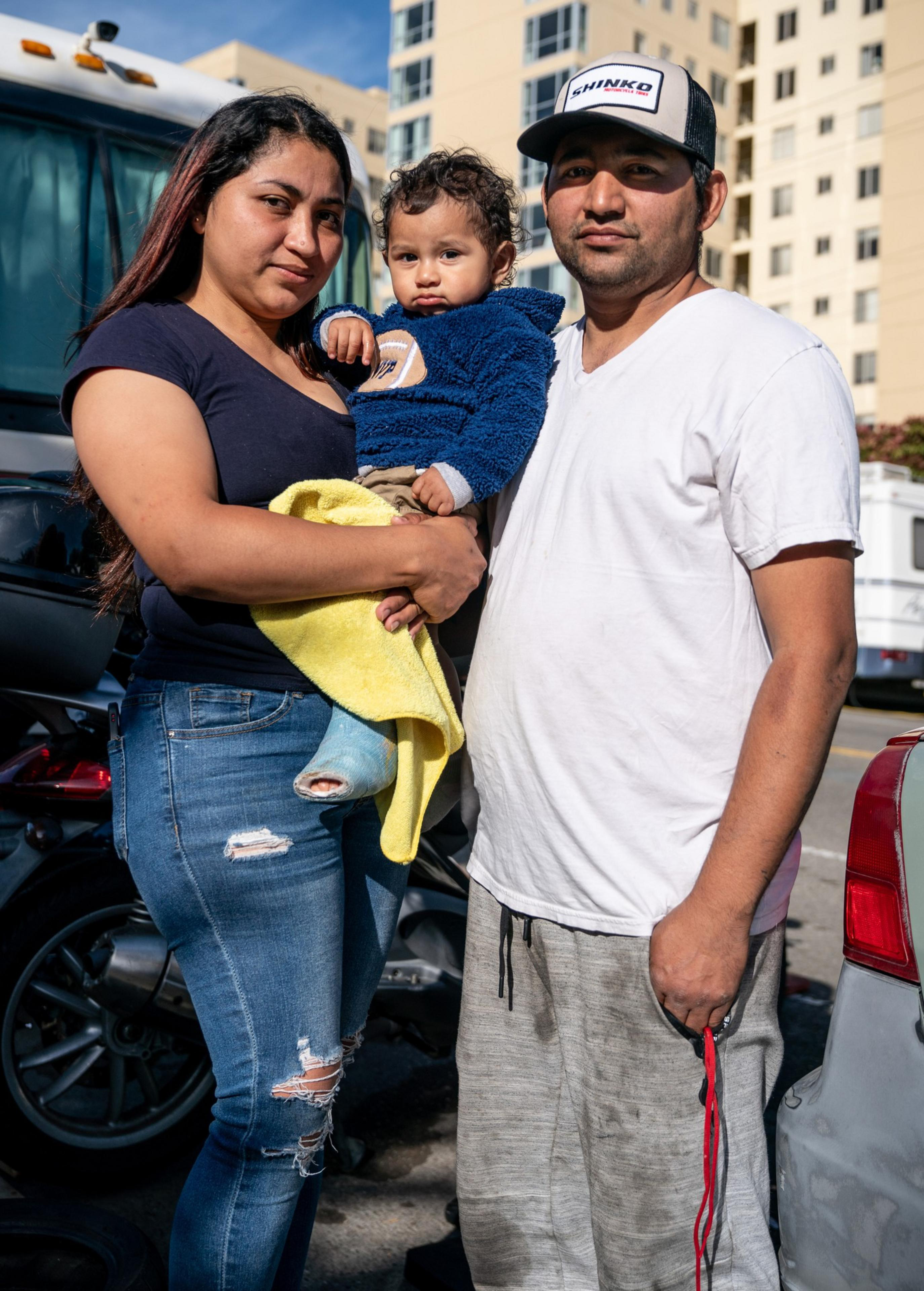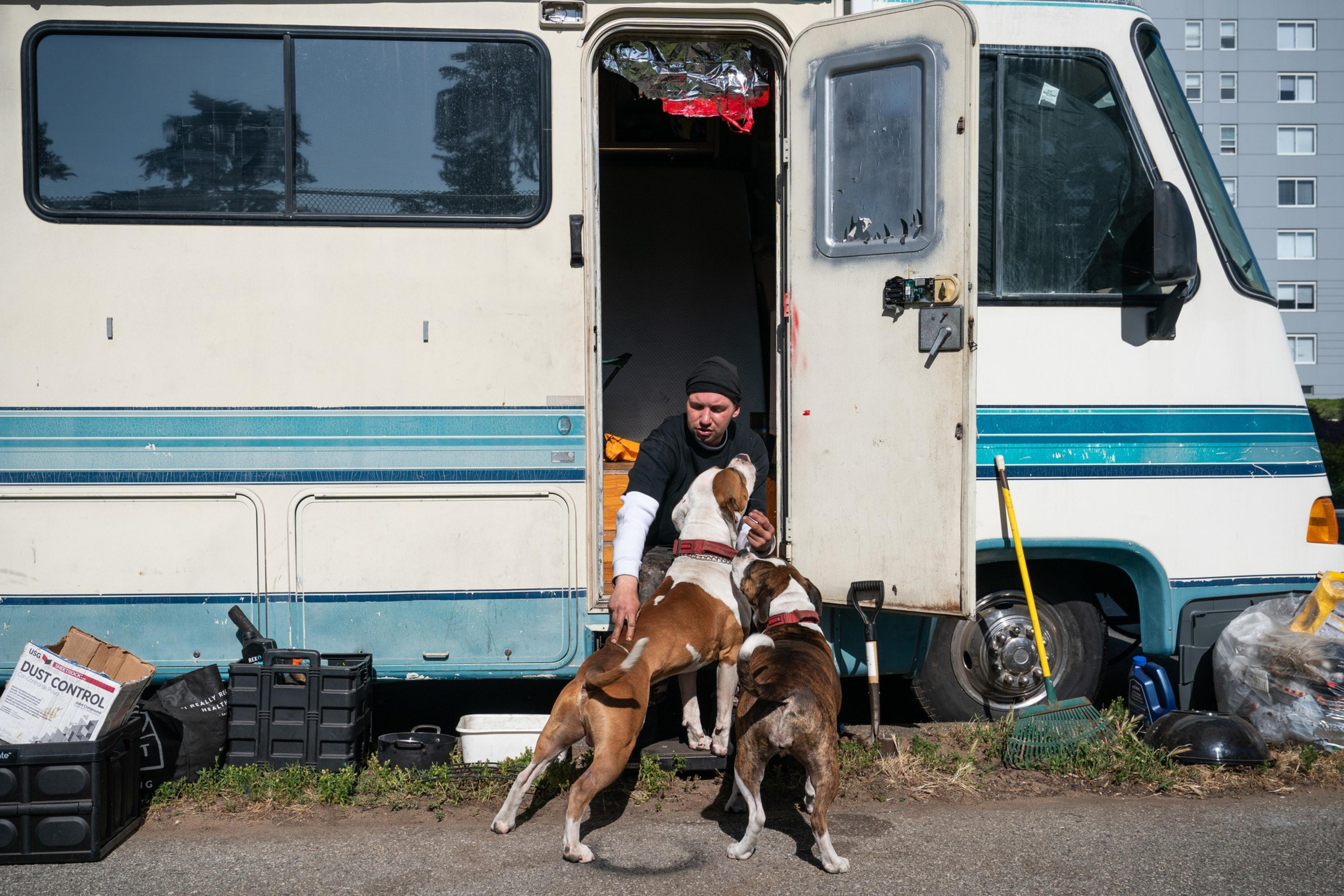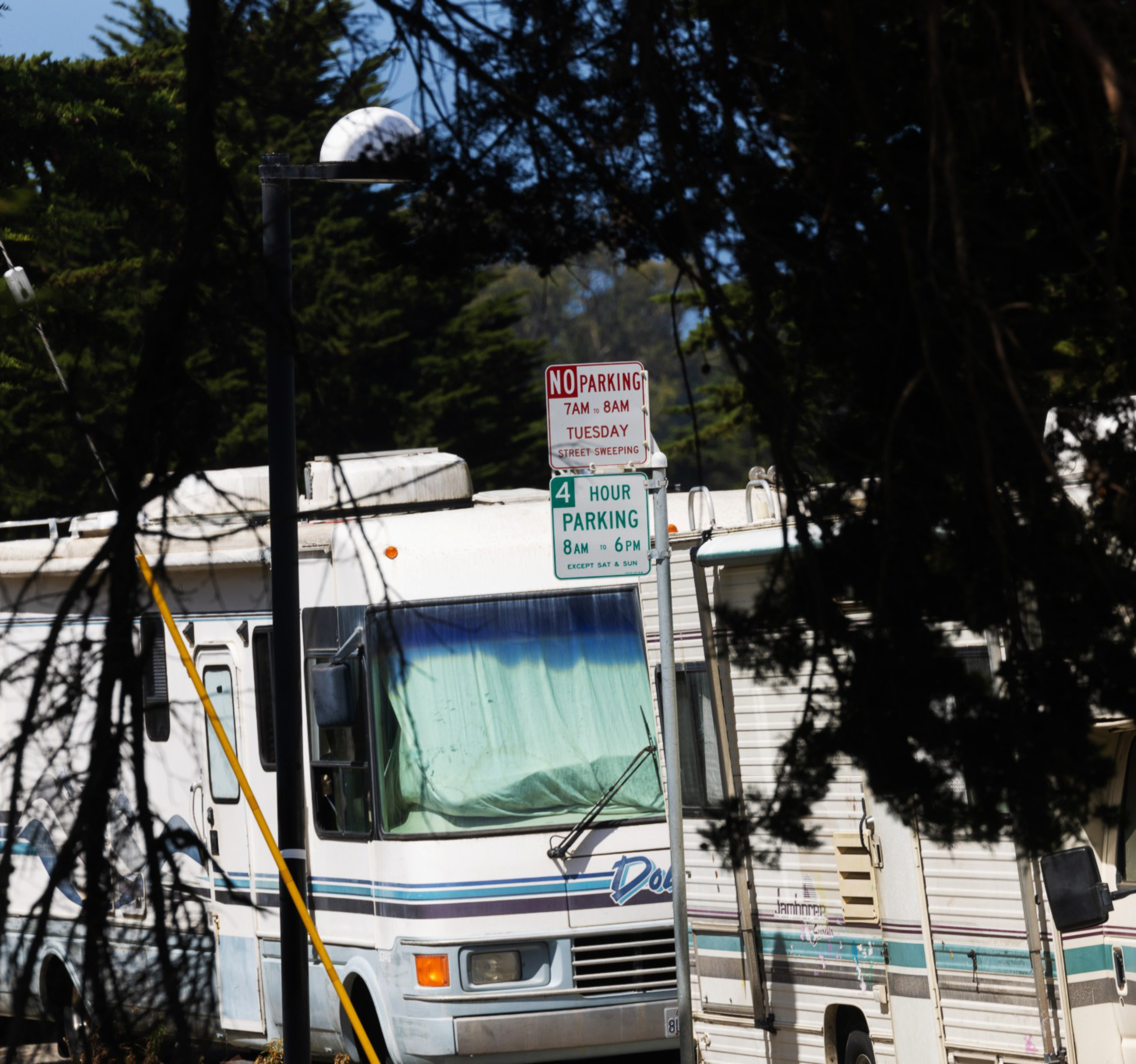Parked on four streets between the eastern shore of Lake Merced and Stonestown Galleria about 120 vehicles—mostly RVs and trailers—are home to nearly 200 adults and children. Some have been there for months, others for years.
Within this population, the community in about 50 vehicles on Winston Drive stands apart for being just that—a community. Mostly Spanish- and Portuguese-speaking immigrants from Central and South America, some residents cook together, share childcare and gather to discuss shared concerns—the stuff of any neighborhood.
Over the years, the RV dwellers of Winston Drive have drawn attention from nonprofit organizations seeking to help them find a secure place to live. At hearings before the San Francisco Municipal Transportation Agency, they opposed parking restrictions, and they have met with the district supervisor to call for the city to establish a shelter to accept them with their vehicles, away from fast-moving traffic with access to utilities and housing services.
City Hall allocated millions of dollars to the effort in 2022, but securing a location has been out of reach. Next month, new street parking restrictions and a road improvement project will force them all to leave, displacing the city’s largest RV encampment in two years and leaving the members of this fragile community to once again fend for themselves in a housing market where most of the options available to them will be worse than the situation they leave behind, and in a city which lacks an overarching strategy for dealing with its large and growing number of people living in vehicles.


Priced out of their Daly City apartment after a rent increase, Carlos Lopez, 34, and Veronica Cañas, 29, and their two children moved into a borrowed RV on Winston Drive in March. Earlier this month, Lopez, a motorcycle mechanic, finished remodeling an RV of their own to live in. But despite the accomplishment, they’re still wary. “We’re worried and anxious,” Cañas said.
Along with more than a dozen other RV dwellers, the couple participated in a demonstration last week over the impending displacement, blocking Winston Drive with a van and holding signs. The three-hour protest, which fell on street sweeping day, forced motorists and the 29 Sunset 58 Lake Merced buses to reroute.
Their neighbor, Humberto Perez, 39, an immigrant from Mexico, has lived on Winston Drive for one year after breaking up with his partner. He works hauling construction debris twice a week, but business has been slow. He’s on a waitlist for housing. He wants a studio apartment to share with his six-year-old son. “They said they wouldn’t move us until they found us a place to live,” Perez said. “It’s the same as Mexico, they promise and never deliver.”
Across the city, there are 8,000 unhoused people on a given day and upward of 20,000 over the course of a year. Balancing the tremendous need with available resources is a constant negotiation for the San Francisco Department of Homelessness and Supportive Housing.
Hope Kamer of Compass Family Services, which is a main services provider for homeless families, said the family shelter system is over-subscribed and the current homeless response system is outdated, especially for immigrant families. “It has become a catch-all for a lack of a citywide plan for the huge influx of newcomer and undocumented families and it’s fundamentally not resourced to do that. It’s just not what it was designed to do,” she said.
San Francisco Mayor London Breed has proposed a partial solution to family homelessness in the upcoming budget.


“We do know that a growing number of families are living in vehicles, including those who are coming to San Francisco without access to housing, which is why the mayor proposed her Safer Families (opens in new tab) initiative in the budget, which will expand emergency shelter and rapid rehousing for families,” a mayor’s office spokesperson said.
The homelessness department offers services to people living in vehicles. While it placed more than two dozen families on and around Winston Drive into permanent housing with emergency vouchers over the last 10 months, many won’t accept offers of shelter or housing assistance.
Vouchers cover rent, housing search assistance and ongoing support services. But there’s often a reluctance to accept them because the subsidy expires in 18 to 24 months, essentially requiring participants to double their income to stay housed. Sometimes finding an apartment can take months, with landlords accepting other tenants over them. Both demands make abandoning RV living difficult.
Margot Kushel, a professor of medicine at UCSF and director of the UCSF Benioff Homelessness and Housing Initiative, said vehicles provide a measure of security and safety that sleeping on the street doesn’t, or for many people, going into a shelter doesn’t. “People told us they preferred vehicles to shelters, but they would have preferred housing,” Kushel said.
Safe parking sites like the one Winston Drive families have been asking for offer a good middle ground, providing a stable place to live, without the threat of tickets and tows, while waiting for housing. A city worker not authorized to speak to the press said in lieu of shelters the city could require permits that would allow people to use their vehicles as housing for three to six months so long as they obtain housing services in conjunction with services for waste disposal.


The city’s record of operating shelters and using them as a bridge to indoor housing is weak. San Francisco opened one beside the Balboa Park BART station on a former Muni parking lot and operated it from 2019 to 2021. Of the 75 people who participated in the first year of the $1.7 million program, only eight found housing while the others simply left, according to a report by the Controller’s Office (opens in new tab). Candlestick Point Bayview Vehicle Triage Center, the only one operating today, has 35 vehicles and costs $170,000 per resident (opens in new tab). PG&E has yet to connect it to power. It’s attracted lawsuits from its own residents, neighbors and the state.
Plans to locate a temporary shelter beside the San Francisco Zoo were roundly criticized by neighbors.
“Despite assessing dozens of sites over the past two years, we have been unable to identify a suitable property for this service,” a homelessness department spokesperson said. “We are not giving up on the goal of opening a westside safe parking program and are actively assessing two possible sites for suitability.”
Jennifer Friedenbach, executive director of the Coalition on Homelessness, which has organized RV dwellers over the years, said setting up a safe parking site is a matter of political will.
“There is funding in the budget for it, they have identified [parking] lots and then if there’s any kind of slight murmur of opposition, they back down,” she said.
For Cañas, the newcomer RV dweller on Winston Drive, the threat of displacement is ever-present. “We feel scared. What is going to happen after all this?” she said.
Update: Information about the city’s homelessness response was clarified.